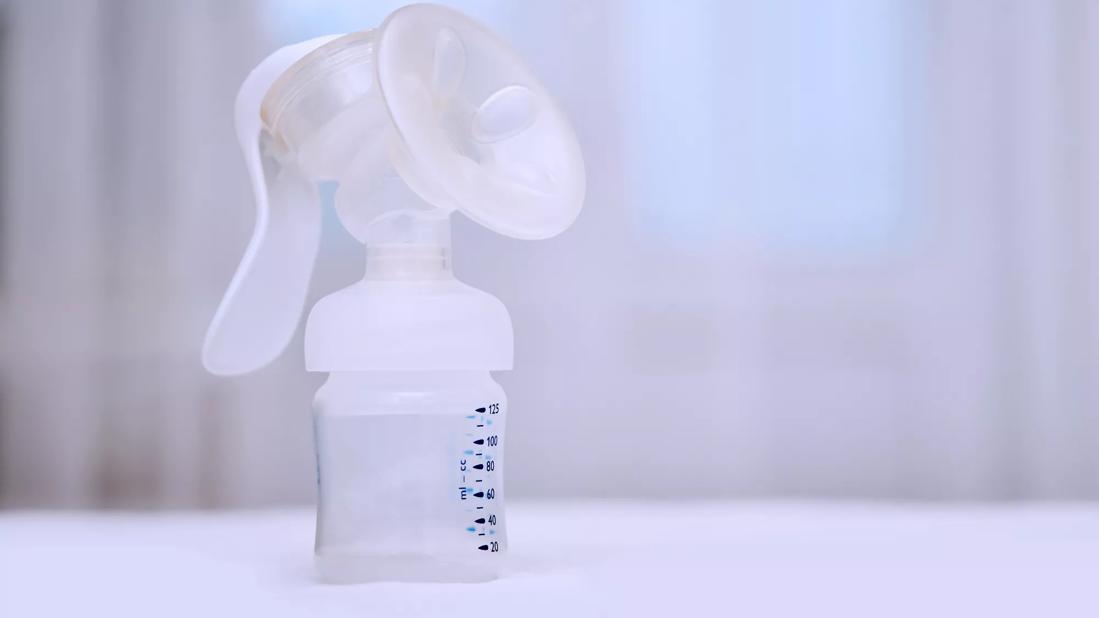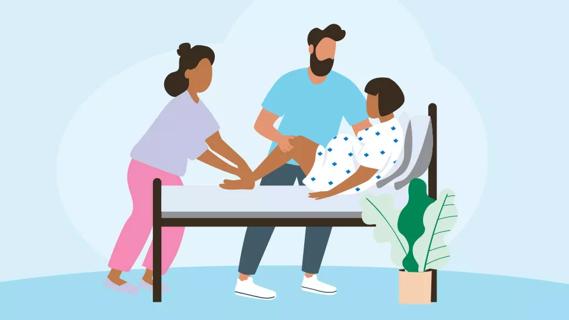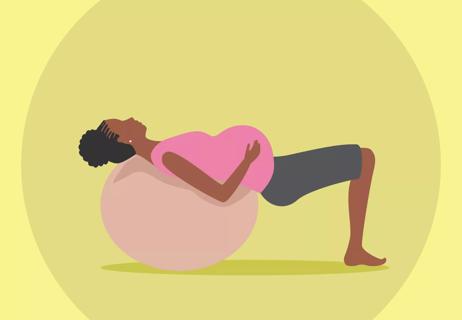While it may be possible, it may not be safe

Nine months have come and gone, the nursery’s painted and you're well past the point of being able to see your toes. But with your oven seemingly too comfortable for your bun, you may be tempted to consider trying out your new breast pump. Does pumping really induce labor?
Advertisement
Cleveland Clinic is a non-profit academic medical center. Advertising on our site helps support our mission. We do not endorse non-Cleveland Clinic products or services. Policy
“While it may be possible, it may not be safe, particularly for those who have high-risk pregnancies or are preterm,” says Ob/Gyn Cristina McClure, DO. “Trying to induce labor at home without monitoring could overstimulate your uterus. This overstimulation could cause it to contract too much and reduce blood flow to your baby.”
Dr. McClure explains the science behind using a breast pump to induce labor, what the research says and safer alternatives.
The idea of pumping to naturally induce labor has to do with your body’s response to nipple stimulation.
“When you nurse a baby, your body releases a hormone called oxytocin. Oxytocin not only stimulates milk production, but it also stimulates uterine contractions,” explains Dr. McClure.
Using a breast pump or a hand to stimulate your nipples can have the same effect. Several studies looking at this method had pregnant women practice nipple stimulation over several days.
“Patients pumped each breast for 15 minutes for a total of one an hour a day,” says Dr. McClure. “Oxytocin levels increased with the highest values on day three of breast stimulation.”
While the idea of naturally inducing labor may sound appealing, Dr. McClure urges caution.
Advertisement
“Induction of any kind should be carried out in a monitored setting. Even if someone is low risk for complications, doctors could quickly respond if there was an emergency,” she says. “Plus, the studies on the effectiveness and safety of this method are limited and tend to be older and small.”
For example, researchers looked at nipple stimulation with a breast pump versus the use of synthetic (human-made) oxytocin (also called Pitocin®) in a 1989 study with 103 participants. They used each method during contraction stress tests. Contraction stress tests measure fetus’ heart rates during contractions to see if they’re under stress.
“Fetal heart rate patterns were abnormal in 2.9% of patients using manual nipple stimulation, compared to 1% of patients who were given Pitocin. So, there was a slightly higher risk using the natural method of nipple stimulation,” reports Dr. McClure. “Providers know how much Pitocin they give patients but can’t tell how much oxytocin the body produces with nipple stimulation. Since we can’t quantify natural oxytocin, it’s possible to overstimulate the uterus, which could decrease blood flow to the baby and cause it stress.”
A 1999 study looking at manual nipple stimulation versus synthetic oxytocin use highlighted a different concern.
“Sixty-five percent of patients in the breast stimulation group had to switch to synthetic oxytocin because their labor didn’t progress,” says Dr. McClure. “It’s possible that breast pump use was too uncomfortable for some or they got tired of having to continuously stimulate their nipples.”
Before trying to kick start labor, Dr. McClure says you should talk to your obstetric provider. They can help you understand if and when induction is an option — and the best way to do it.
When it comes to natural methods, you may be able to have an impact at the very beginning of labor — before your first noticeable contraction. Experts refer to labor’s first stage as the latent phase.
“For some women, the latent phase takes a couple of weeks. During it, the cervix shortens and softens, a process known as cervical ripening, and sometimes even dilates its first few centimeters,” explains Dr. McClure.
“Think of the cervix like a thick rubber band. A thick rubber band is harder to stretch than a skinny one of the same diameter. Ripening is similar. If you’re just using Pitocin to try to help dilate the cervix but it’s still stiff, it’s going to take a really long time.”
That’s where hormone-like chemicals called prostaglandins come in handy. They can help soften your cervix. If your pregnancy is low risk, Dr. McClure says you may be able to help your body release prostaglandins by doing activities that put pressure on your cervix.
Advertisement
“As your cervix thins and dilates more, that’s when oxytocin becomes helpful and could help contractions further stretch it,” she notes. These activities include:
While Dr. McClure doesn’t recommend pumping before birth to naturally induce labor, she says larger studies could change that in the future.
“Studying this method in a large community setting could lead to new research” she adds. “If patients are interested, they should discuss it with their provider to get the conversation going.”
Advertisement
Learn more about our editorial process.
Advertisement

It’s common to have a bowel movement when you’re giving birth, but your care team truly doesn’t want you to be embarrassed by it

Lamaze birthing techniques — like breathing during labor and bonding after birth — are among the most commonly taught methods in childbirth prep classes

Hypnobirthing uses techniques like breathwork and deep relaxation to encourage calm during labor and delivery

Plan ahead, pack that bag, be attentive and be an advocate

Science says only one way actually works, but there are a few others that are still safe to try

Use a birthing ball for pregnancy exercises and to ease labor pain

The pros and cons of this nondrug option

Most antihistamines, like Zyrtec, are OK, but avoid decongestants for at least the first trimester

Start having sex about 72 hours before ovulation, then at least every other day during your fertile window

Attachment theory suggests that your earliest relationships shape connections throughout your life

It isn’t a recognized mental health disorder, but research shows that problematic social media use can negatively affect your mental health, self-esteem and sleep